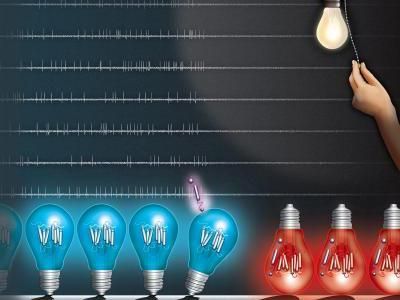How brain microcircuits integrate information from different senses
A new publication in the journal Neuron sheds new light onto the unknown processes on how the brain integrates the inputs from the different senses in the complex circuits formed by molecularly distinct types of nerve cells. The work was led by new Umeå University associate professor Paolo Medini.
One of the biggest challenges in Neuroscience is to understand how the cerebral cortex of the brain processes and integrates the inputs from the different senses (like vision, hearing and touch) to control for example, that we can respond to an event in the environment with precise movement of our body.
The brain cortex is composed by morphologically and functionally different types of nerve cells, e.g. excitatory, inhibitory, that connect in very precise ways. Paolo Medini and co-workers show that the integration of inputs from different senses in the brain occurs differently in excitatory and inhibitory cells, as well as in superficial and in the deep layers of the cortex, the latter ones being those that send electrical signals out from the cortex to other brain structures.
“The relevance and the innovation of this work is that by combining advanced techniques to visualize the functional activity of many nerve cells in the brain and new molecular genetic techniques that allows us to change the electrical activity of different cell types, we can for the first time understand how the different nerve cells composing brain circuits communicate with each other”, says Paolo Medini.
The new knowledge is essential to design much needed future strategies to stimulate brain repair. It is not enough to transplant nerve cells in the lesion site, as the biggest challenge is to re-create or re-activate these precise circuits made by nerve cells.
Paolo Medini has a Medical background and worked in Germany at the Max Planck Institute for Medical Research of Heidelberg, as well as a Team leader at the Italian Institute of Technology in Genova, Italy. He recently started on the Associate Professor position in Cellular and Molecular Physiology at the Molecular Biology Department.
He is now leading a brand new Brain Circuits Lab with state of state-of-the-art techniques such as two-photon microscopy, optogenetics and electrophysiology to investigate the circuit functioning and repair in the brain cortex. This investment has been possible by a generous contribution from the Kempe Foundation and by the combined effort of Umeå University.
“By combining cell physiology knowledge in the intact brain with molecular biology expertise, we plan to pave the way for this kind of innovative research that is new to Umeå University and nationally”, says Paolo Medini.
Original publication
Olcese U, Iurilli G, Medini P. “Cellular and synaptic architecture of multisensory integration in the mouse neocortex”. Neuron. 2013 Aug 7;79(3): 579-593
Most read news
Original publication
Olcese U, Iurilli G, Medini P. “Cellular and synaptic architecture of multisensory integration in the mouse neocortex”. Neuron. 2013 Aug 7;79(3): 579-593
Organizations
Other news from the department science

Get the analytics and lab tech industry in your inbox
By submitting this form you agree that LUMITOS AG will send you the newsletter(s) selected above by email. Your data will not be passed on to third parties. Your data will be stored and processed in accordance with our data protection regulations. LUMITOS may contact you by email for the purpose of advertising or market and opinion surveys. You can revoke your consent at any time without giving reasons to LUMITOS AG, Ernst-Augustin-Str. 2, 12489 Berlin, Germany or by e-mail at revoke@lumitos.com with effect for the future. In addition, each email contains a link to unsubscribe from the corresponding newsletter.





















![[Fe]-hydrogenase catalysis visualized using para-hydrogen-enhanced nuclear magnetic resonance spectroscopy](https://img.chemie.de/Portal/News/675fd46b9b54f_sBuG8s4sS.png?tr=w-712,h-534,cm-extract,x-0,y-16:n-xl)




































